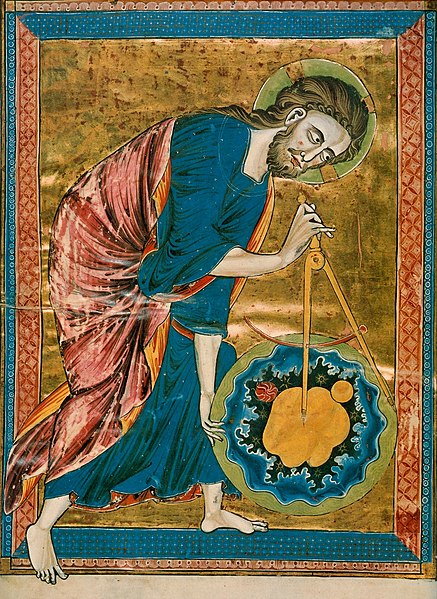Science and the Catholic Church
The relationship between science and the Catholic Church is a widely debated subject. Historically, the Catholic Church has been a patron of sciences. It has been prolific in the foundation and funding of schools, universities, and hospitals, and many clergy have been active in the sciences. Some historians of science such as Pierre Duhem credit medieval Catholic mathematicians and philosophers such as John Buridan, Nicole Oresme, and Roger Bacon as the founders of modern science. Duhem found "the mechanics and physics, of which modern times are justifiably proud, to proceed by an uninterrupted series of scarcely perceptible improvements from doctrines professed in the heart of the medieval schools." Historian John Heilbron says that "The Roman Catholic Church gave more financial and social support to the study of astronomy for over six centuries, from the recovery of ancient learning during the late Middle Ages into the Enlightenment, than any other, and probably all, other Institutions." The conflict thesis and other critiques emphasize the historical or contemporary conflict between the Catholic Church and science, citing, in particular, the trial of Galileo as evidence. For its part, the Catholic Church teaches that science and the Christian faith are complementary, as can be seen from the Catechism of the Catholic Church which states in regards to faith and science:Though faith is above reason, there can never be any real discrepancy between faith and reason. Since the same God who reveals mysteries and infuses faith has bestowed the light of reason on the human mind, God cannot deny himself, nor can truth ever contradict truth. ... Consequently, methodical research in all branches of knowledge, provided it is carried out in a truly scientific manner and does not override moral laws, can never conflict with the faith, because the things of the world and the things of faith derive from the same God. The humble and persevering investigator of the secrets of nature is being led, as it were, by the hand of God despite himself, for it is God, the conserver of all things, who made them what they are.

God as Architect/Geometer, from the frontispiece of French Codex Vindobonensis 2554, ca. 1250.
Skellig Michael, Ireland. Following the Fall of Rome monastic settlements systematically maintained knowledge of classical languages and learning.
Pythagoras on one of the archivolts at Chartres Cathedral. From Medieval Europe's Cathedral Schools grew many of Europe's modern universities.
Marquis de Condorcet, a Period of Enlightenment philosopher and mathematician.
The Catholic Church, also known as the Roman Catholic Church, is the largest Christian church, with 1.39 billion baptized Catholics worldwide as of 2022. It is among the world's oldest and largest international institutions, and has played a prominent role in the history and development of Western civilization. The church consists of 24 sui iuris churches, including the Latin Church and 23 Eastern Catholic Churches, which comprise almost 3,500 dioceses and eparchies located around the world. The pope, who is the bishop of Rome, is the chief pastor of the church. The Diocese of Rome, known as the Holy See, is the central governing authority of the church. The administrative body of the Holy See, the Roman Curia, has its principal offices in Vatican City, a small independent city-state and enclave within the Italian capital city of Rome, of which the pope is head of state.
St. Peter's Basilica in Vatican City, the largest Catholic church building in the world
The first use of the term "Catholic Church", meaning "universal church", was by the church father Saint Ignatius of Antioch in his Letter to the Smyrnaeans in c. 110 AD. Ignatius of Antioch also is credited with the first recorded use of the term Christianity ten years earlier, in c. 100 AD. He died in Rome, with his relics located in San Clemente al Laterano.
A c. 1481–1482 fresco by Pietro Perugino in the Sistine Chapel showing Jesus giving the keys of heaven to Saint Peter
The Last Supper, a late 1490s mural painting by Leonardo da Vinci, depicting the last supper of Jesus and his twelve apostles on the eve of his crucifixion. Most of Jesus' apostles are buried in Rome, including Saint Peter.








